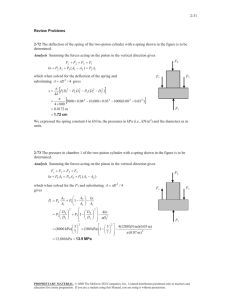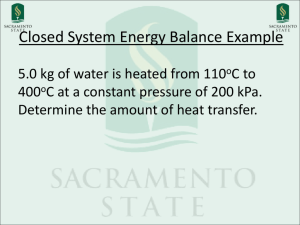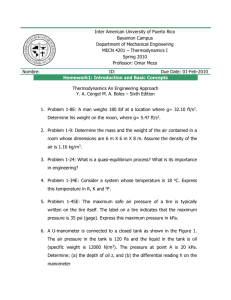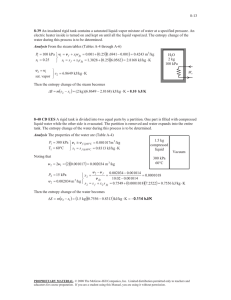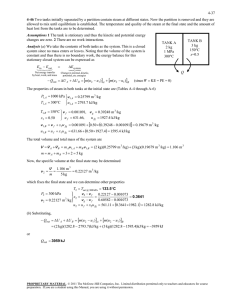3-36 and the final equilibrium pressure when the valve is opened... /kg.K (Table A-1).
advertisement
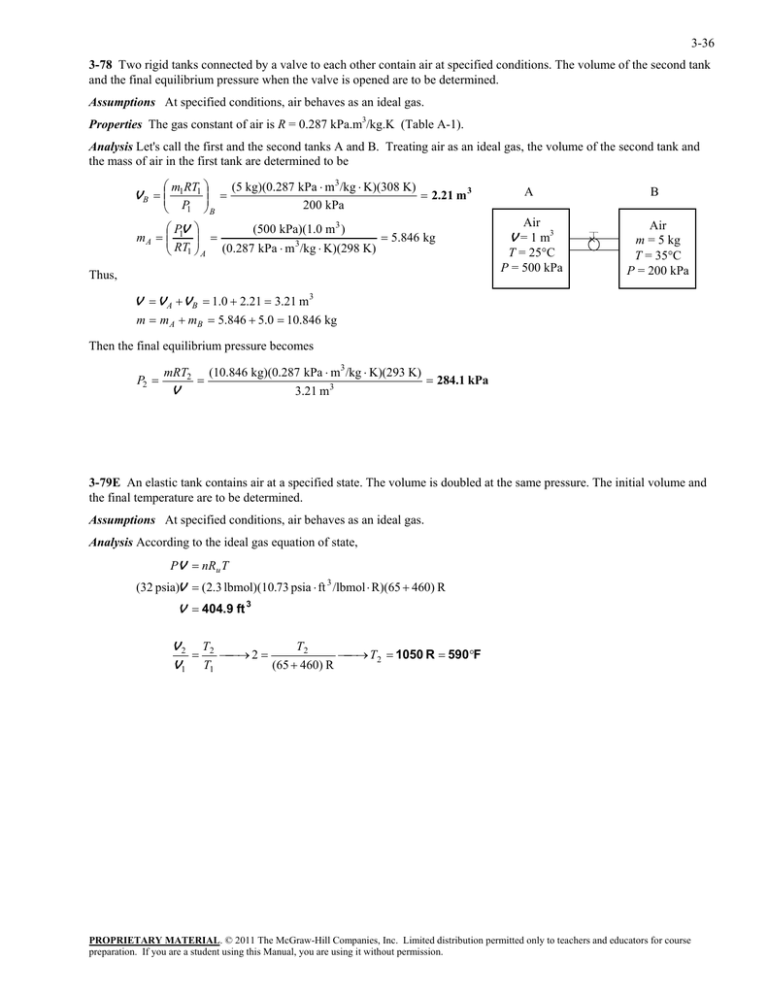
3-36 3-78 Two rigid tanks connected by a valve to each other contain air at specified conditions. The volume of the second tank and the final equilibrium pressure when the valve is opened are to be determined. Assumptions At specified conditions, air behaves as an ideal gas. Properties The gas constant of air is R = 0.287 kPa.m3/kg.K (Table A-1). Analysis Let's call the first and the second tanks A and B. Treating air as an ideal gas, the volume of the second tank and the mass of air in the first tank are determined to be m RT V B 1 1 P1 B (5 kg)(0.287 kPa m 3/kg K)(308 K) 2.21 m 3 200 kPa PV (500 kPa)(1.0 m3 ) m A 1 5.846 kg 3 RT1 A (0.287 kPa m /kg K)(298 K) Thus, A B Air V = 1 m3 T = 25C P = 500 kPa Air m = 5 kg T = 35C P = 200 kPa V V A V B 1.0 2.21 3.21 m3 m m A mB 5.846 5.0 10.846 kg Then the final equilibrium pressure becomes P2 mRT2 V (10.846 kg)(0.287 kPa m3 /kg K)(293 K) 3.21 m3 284.1 kPa 3-79E An elastic tank contains air at a specified state. The volume is doubled at the same pressure. The initial volume and the final temperature are to be determined. Assumptions At specified conditions, air behaves as an ideal gas. Analysis According to the ideal gas equation of state, PV nRu T (32 psia)V (2.3 lbmol)(10.73 psia ft 3 /lbmol R)(65 460) R V 404.9 ft 3 T2 V 2 T2 2 T2 1050 R 590F V 1 T1 (65 460) R PROPRIETARY MATERIAL. © 2011 The McGraw-Hill Companies, Inc. Limited distribution permitted only to teachers and educators for course preparation. If you are a student using this Manual, you are using it without permission.



